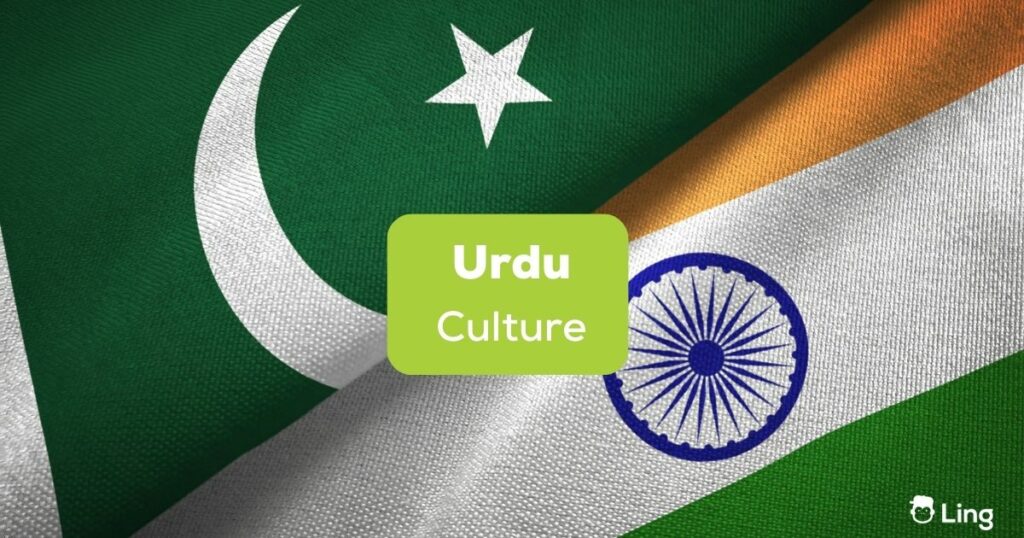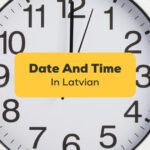Khush āmdīd (welcome) to the vibrant and enchanting world of Urdu culture, where India and Pakistan showcase a tapestry of similarities and delightful differences. These two nations, connected by history, language, and a shared love for poetry, music, and traditions, weave together a cultural kaleidoscope that will leave you awe-inspired. While both countries cherish the eloquence and beauty of the Urdu language, they have distinct flavors that make their cultural expressions unique.
From the melodic tones of ghazals (غزل) to the aromatic spices that dance in their cuisine, you’ll find a harmonious symphony of shared customs, festivals, and values. Yet, like two playful siblings, they playfully compete over idioms, accents, and regional quirks that keep their cultural identities alive. So, join us on this captivating journey as we uncover the wonders of Urdu culture, celebrating the ties that bind India and Pakistan while cherishing the vibrant diversity that sets them apart.
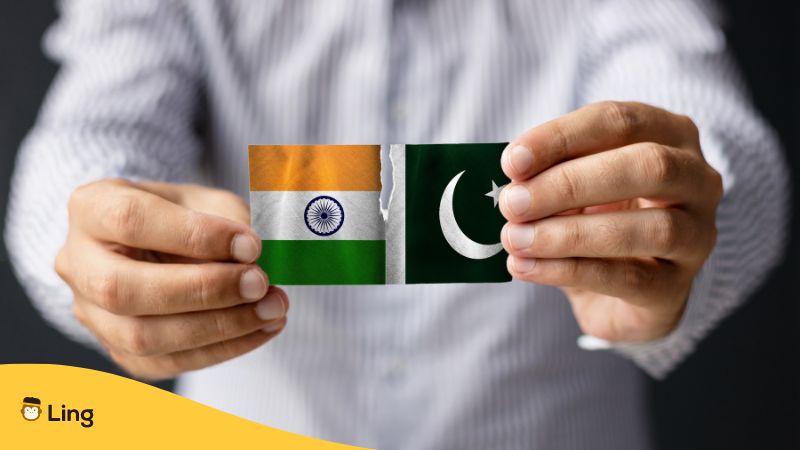
What Constitutes The Urdu Culture?
The Urdu culture in South Asia encompasses a tapestry of linguistic, literary, artistic, and culinary expressions. Urdu serves as a language of communication and artistic expression, woven into the fabric of society. It showcases a fusion of Indian and Persian influences, with an amalgamation of Hindu, Muslim, Sikh, and other regional traditions.
Urdu literature, poetry, and ghazals flourish, reflecting the diverse experiences and emotions of the people. The cuisine boasts a tantalizing blend of aromatic spices and flavors, and celebrations of festivals like Eid and Muharram bring communities together. The Urdu culture in the South Asian region is a vibrant mosaic, celebrating its unique heritage while embracing diversity.
The Similarities
The Islamic nation of Pakistan was cut out from the same geographic and ethnic cloth that India is made of. The Urdu culture took root in the Delhi region (modern-day New Delhi, India) of the pre-partitioned or undivided India when the Delhi sultanate was on the precipice of falling completely into the hands of the Mughals.
Urdu and Hindi – these two beautiful languages were born simultaneously, in the same region. Since they are mutually understandable, they are regarded as sister languages. This is one of the most basic reasons for Pakistani and North Indian cultures sharing a common ancestry. Keeping this in mind, let us look at the basic similarities between the culture of Pakistan and India.
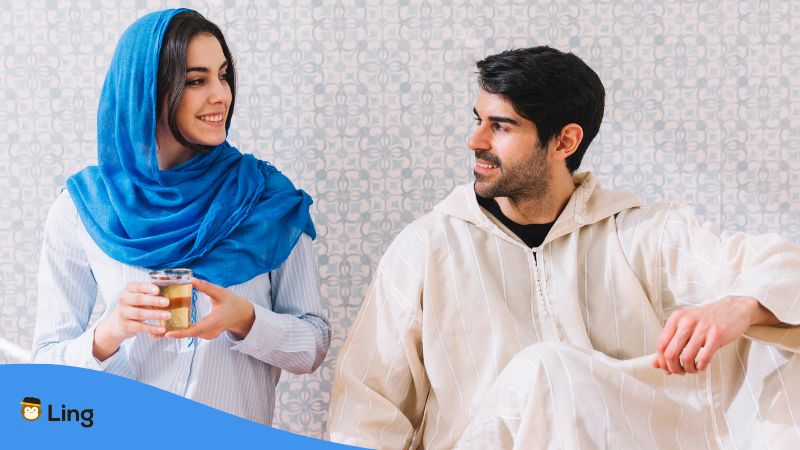
#1 The Urdu Language
One of the most significant similarities between the Urdu culture of India and Pakistan is the language itself. Modern vernacular Urdu serves as a shared language and holds a special place in both countries, serving as a means of communication, literature, and cultural expression. While it is the national language of Pakistan, it holds the status of being one of the 22 official languages of India. It is spoken as a first language by nearly 70 million people and as a second language by more than 100 million, collectively in both countries. The two largest Urdu-speaking cities of modern-day India are Hyderabad & Lucknow, where the beautiful Urdu culture is still being carefully retained by its patrons.
#2 Literature & Poetry
Both India and Pakistan have a rich tradition of Urdu literature and poetry. Prominent poets like Mirza Ghalib, Faiz Ahmed Faiz, Mir Taqi Mir, Allama Iqbal, and Jaun Eliya have left an indelible mark on Urdu literature, and are celebrated by readers on both sides of the border.
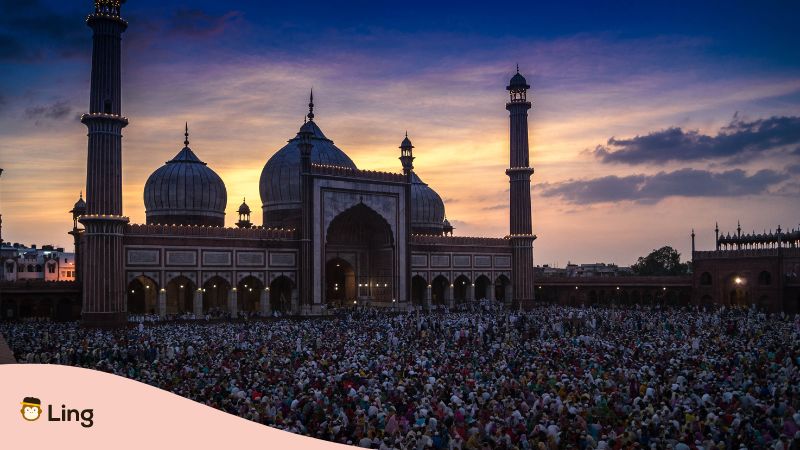
#3 Festivals & Marriage Traditions
Many festivals are celebrated with enthusiasm and fervor in both India and Pakistan, transcending borders. Events such as Eid-ul-Fitr (عید الفطر), Eid-ul-Adha (عید الاضحی), and Muharram (محرم) bring communities together, irrespective of nationality, to celebrate and commemorate shared religious and cultural traditions.
Even marriage traditions on both sides are quite similar, encompassing a long list of rituals like Mangani (engagement), Sangeet/ Dholki (dance party), Mehendi (henna ceremony), Baraat (wedding procession), Nikkah (wedding ceremony), and Walima (reception).
#4 Music And Ghazals
The love for music and ghazals (poetic verses) is deeply ingrained in the Urdu culture of both India and Pakistan. Renowned singers like the Late Nusrat Fateh Ali Khan, Late Mehdi Hassan, and Ustad Ghulam Ali of Pakistan are loved beyond limits in India. At the same time, an equal number of Pakistanis are big fans of Indian ghazal maestros like the Late Jagjit Singh, Late Talat Mehmood, and Late Mohammad Rafi. These artists captivated audiences on both sides with their soul-stirring renditions.
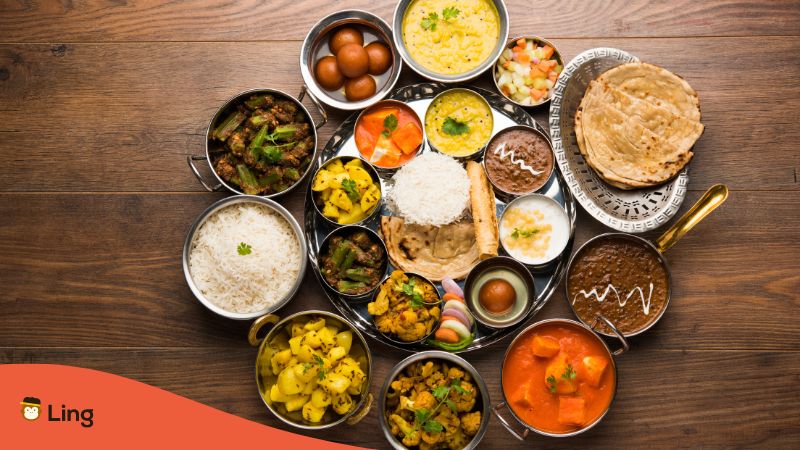
#5 Cuisine
Food is a unifying factor in the entire South Asian culture. The love for aromatic spices, hearty biryanis, succulent kebabs, and sweet delights like jalebi, seviyan/semiyan, and gulab jamun is shared across borders. Nahari, Haleem, Korma, Lassi, Dahi Bhalley, Samosa, Paranthe, Pulao, Halwa, and Sheemal equally tantalize North Indian and Pakistani taste buds with their exquisite flavors. The unique style of dum cooking is prevalent on both sides of the border.
#6 City Architecture
You’d do a double-take if shown a photograph of Delhi’s Jama Masjid (جامع مسجد) and Lahore’s Badshahi mosque (بادشاہی مسجد) and told that these are two different structures in two different cities of two different countries. Pakistani cities like Lahore and Islamabad have an uncanny resemblance to many north Indian cities like Delhi, Lucknow, Ajmer, and so on. The back alleys of Old Delhi and Lahore are like clones of each other. Did you know that there is a place called Dilli Gate in Lahore and a Lahori Gate in Delhi?
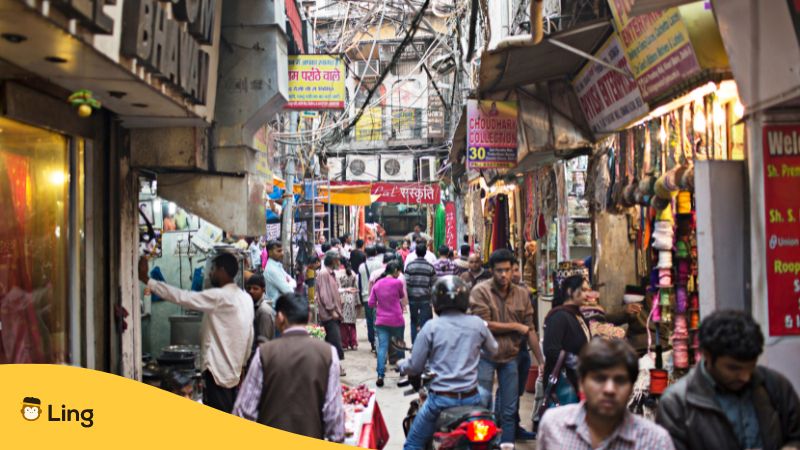
The Differences
We mentioned above some of the shared elements that create a strong bond between the cultures of North India and Pakistan, showcasing the richness and depth of their common heritage. Let us now take a look at the differences between the languages and the cultures of these two countries.
#1 Accent & Pronunciation
One noticeable difference in the Urdu culture of India and Pakistan is the accent and pronunciation of the Urdu language. While the basic structure of the language remains the same, regional variations and influences shape the way words are pronounced, resulting in distinct accents that can be identified as Indian Urdu or Pakistani Urdu.
Moreover, regarding the Urdu script, in Pakistan, Urdu is only written (right to left) in the perso-arabic script called Nastaliq (نستعلیق), but in India, it is also often written in the Devanagari script which is used for writing Hindi and Sanskrit.
#2 Vocabulary & Idioms
Another difference lies in the development of the vocabulary and idiomatic expressions used in Urdu. Due to historical, regional, and linguistic influences, there are variations in certain words, idioms, and colloquialisms. Different regions within India and Pakistan have their own unique linguistic flavors, adding diversity to the Urdu language. For example, most of the Urdu speakers of India speak the language by infusing it with the vocabulary of the local dialect. Of course, English words mark their presence from time to time.
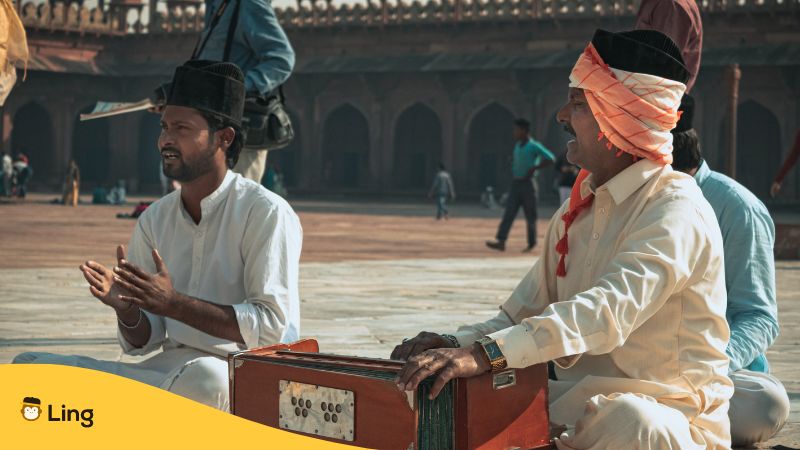
#3 Cultural Influences
The Urdu culture of India and Pakistan reflects the diverse cultural influences within each country. India’s Urdu culture showcases a blend of Hindu, Muslim, Sikh, and other regional influences, while Pakistan’s Urdu culture is more influenced by Islamic traditions and regional customs and religion.
One of the greatest imports of the Urdu culture in pre-partitioned India was Sufi shayari (شاعری – poetry) and mausiqi (موسیقی – music). Sufism is the mystical or spiritual aspect of the Islamic religion and is majorly reflected through the minstrel way of singing by Sufi saints. It found patronage amidst Hindus due to its basic tenet of a personalized God, leading toward spiritual awakening and moving away from the prevalent dogmatism – the underlying philosophy of Hinduism.
These wandering-singing minstrels blurred the strict lines of demarcations between the Hindu and Muslim faith. Even today, Hindus and Muslims alike flock to many such shrines in north India – most notably Ajmer Sharif and Hazrat Nizamuddin – to pay their respect to the cherished Sufi tradition and partake in the devotional singing known as Sufi shayari.
#4 Hindustani Classical Music
The beautiful confluence of Hindu-Muslim tradition is also reflected in the Ganga-Jamuni tehzeeb (گنگا جمونی تہذیب) of North India. It is most evident in the Guru-Shishya Parampara (old-school teacher-student relationship) followed in the hallowed halls of Hindustani Classical music. Many renowned Hindu music artists from the Hindustani classical genre have had Muslim Gurus/Ustads (teachers) and vice-versa.
Both the students and the teachers keep their religious beliefs aside to treat music as their common religion. In the process, they involuntarily adopt many traditions and practices of each other’s faith and form their own tradition. These artists dedicate their entire lives to the service of Hindustani classical music and to keep it alive and thriving in modern times. Pakistan, on the other hand, being an Islamic majority nation, misses out on this barter system.
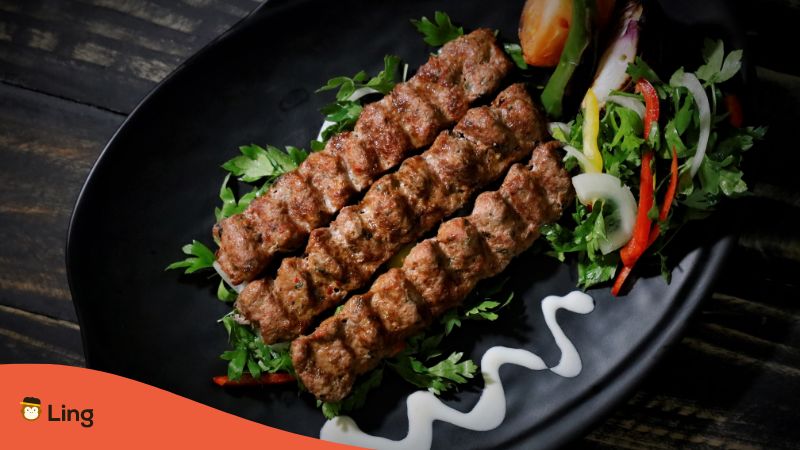
#5 Festive Food
Although both India and Pakistan have a rich tradition of food and festivals, there are certain noticeable differences when it comes to non-vegetarian food. For example, Pakistani Muslims have a tradition of sacrificing a cow during Eid-ul-Adha, as well as consuming beef in their cuisine. However, their counterparts in India make do with a goat sacrifice, showing their respect to their Hindu countrymen. That’s because the cow is considered holy by the Hindus. Due to this practice, Eid-ul-Adha is known as Bakrid in India, the word Bakri being a direct translation of goat in Hindi/Urdu. A majority of Indian Muslims also refrain from consuming beef in their diet due to the same reason.
Learn Urdu With Ling
These similarities and differences add depth and richness to the Urdu culture of both countries, showcasing the diverse expressions and influences within each country’s unique Urdu-speaking communities. If you wish to read more such articles related to the Urdu language, don’t miss browsing the well-curated blog section of the Ling platform.
And to take your language-learning skills further, you can always depend on the Ling app! Its gamified interface, interactive exercises, and fun quizzes make learning a language an enjoyable and rewarding experience. With in-depth lessons and real-time feedback, you can progress at your own pace and master the language quickly. It is completely free to download from the Google Play Store or Apple App Store.
